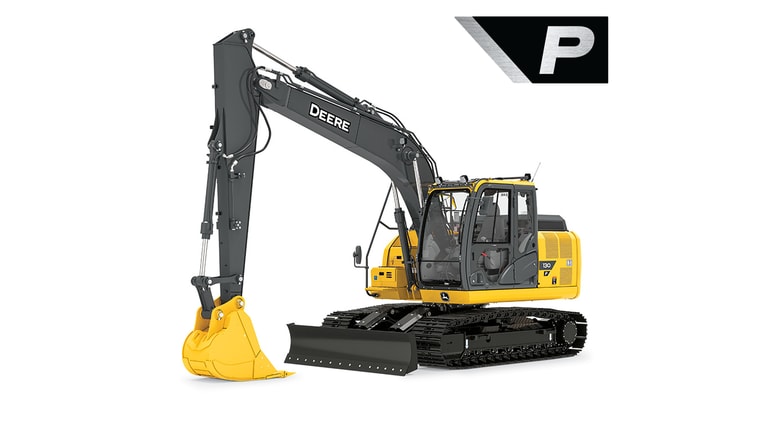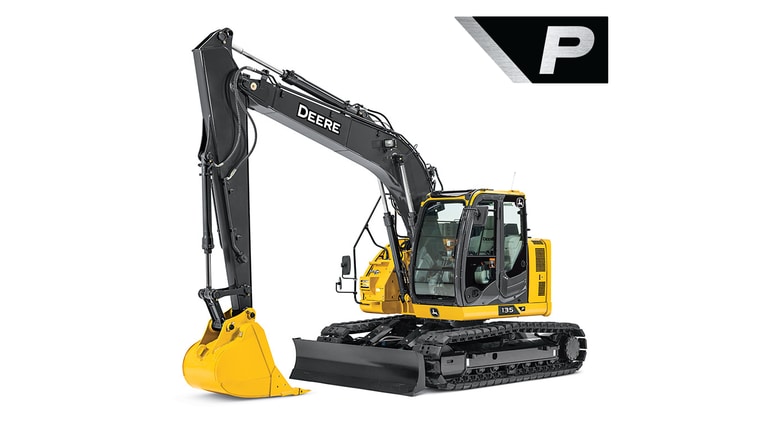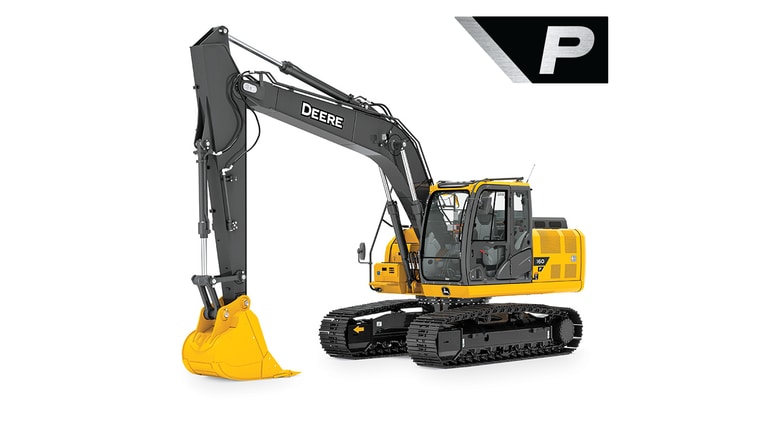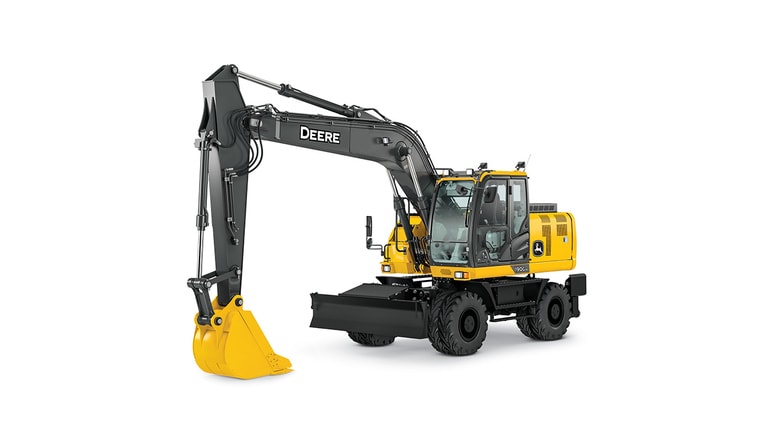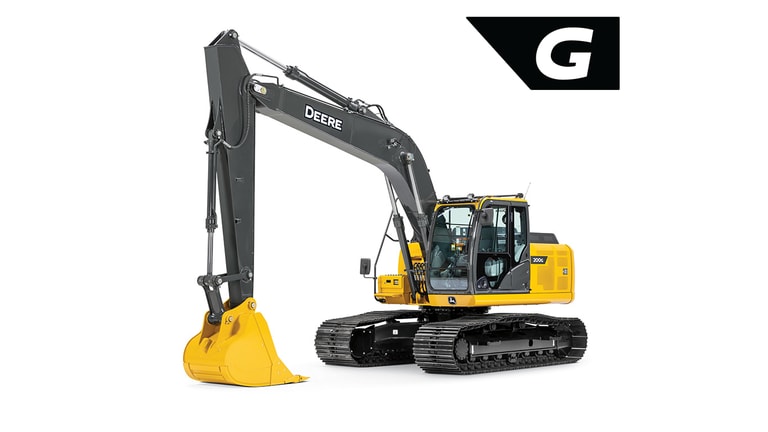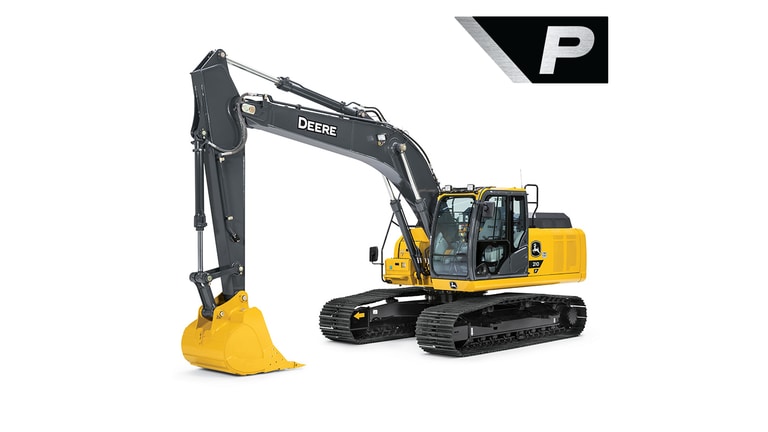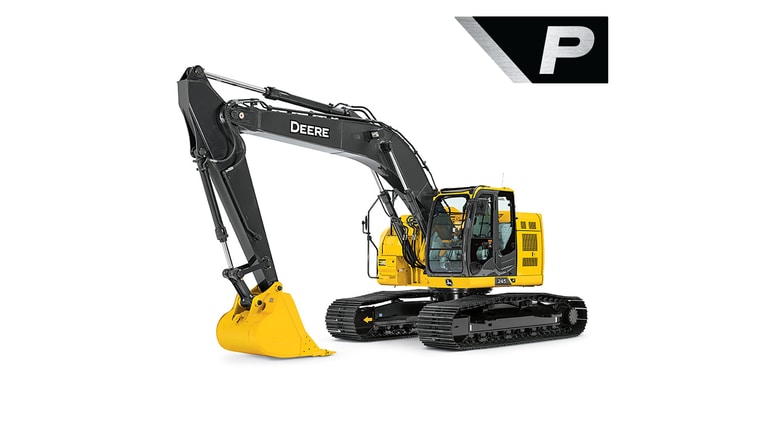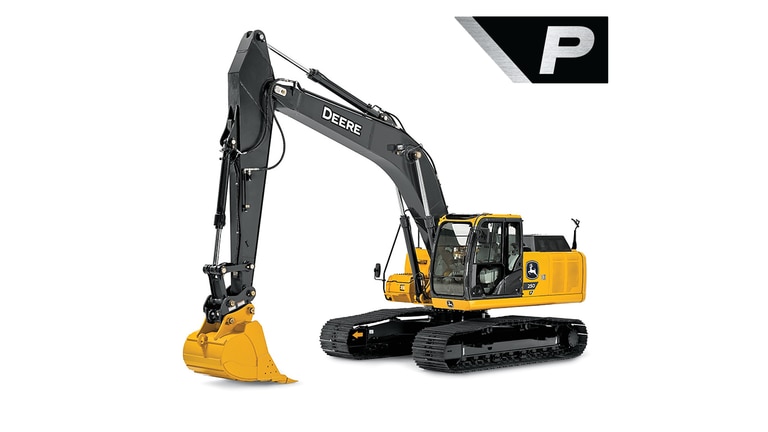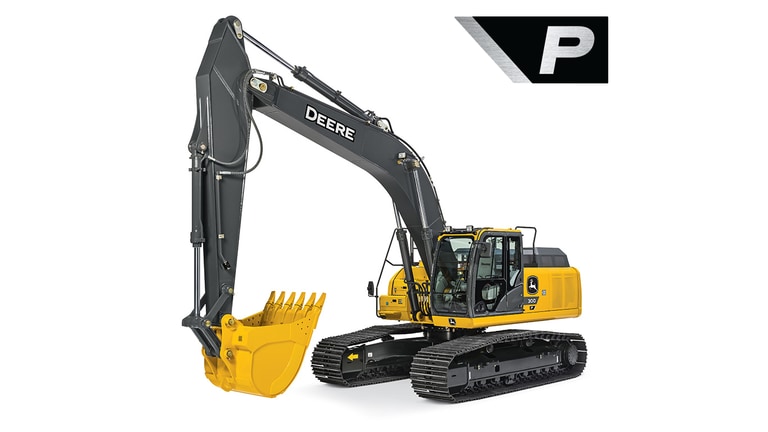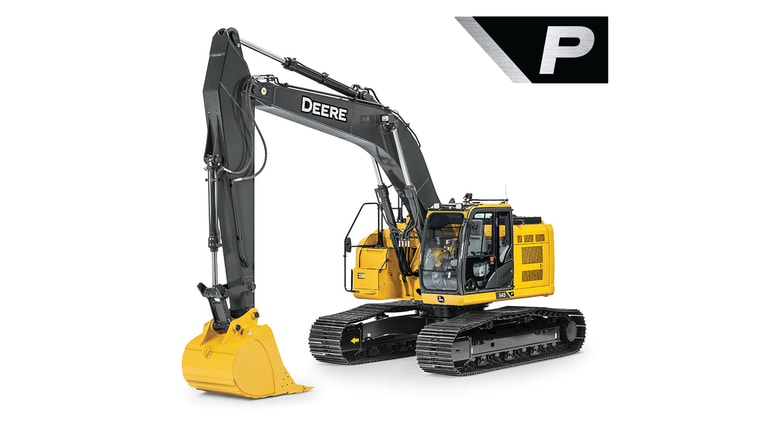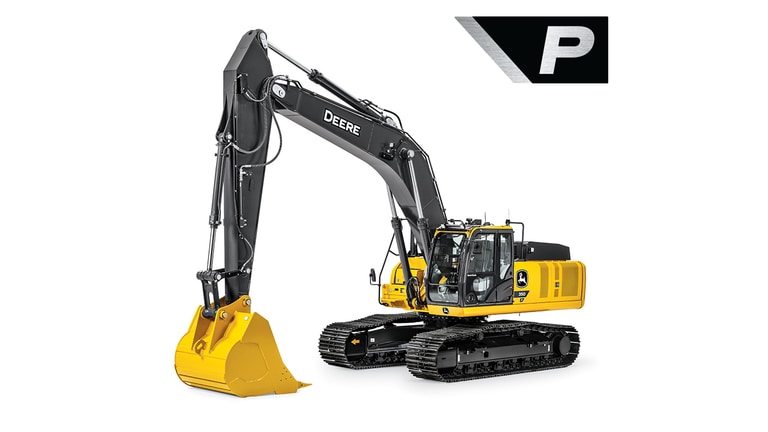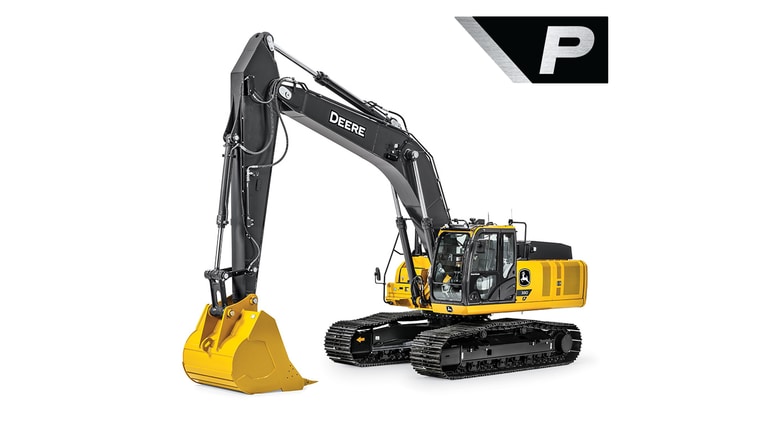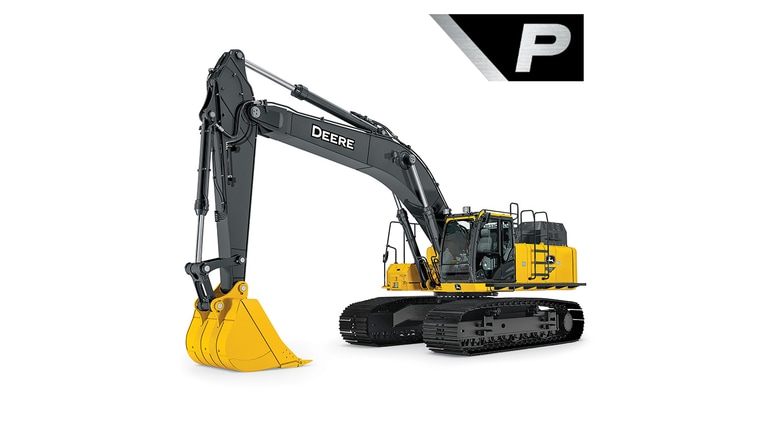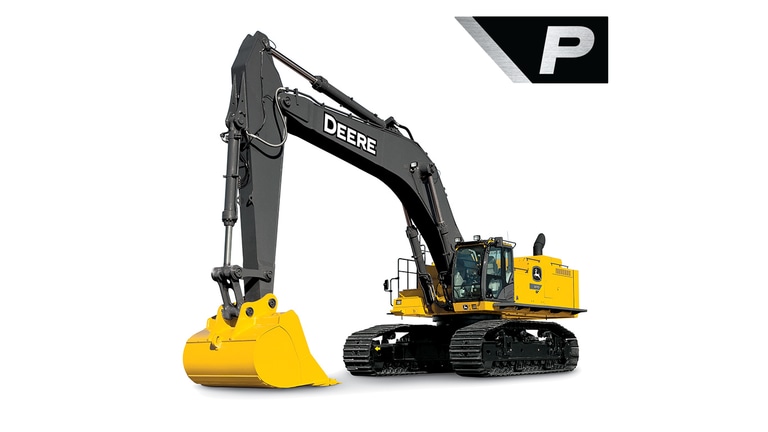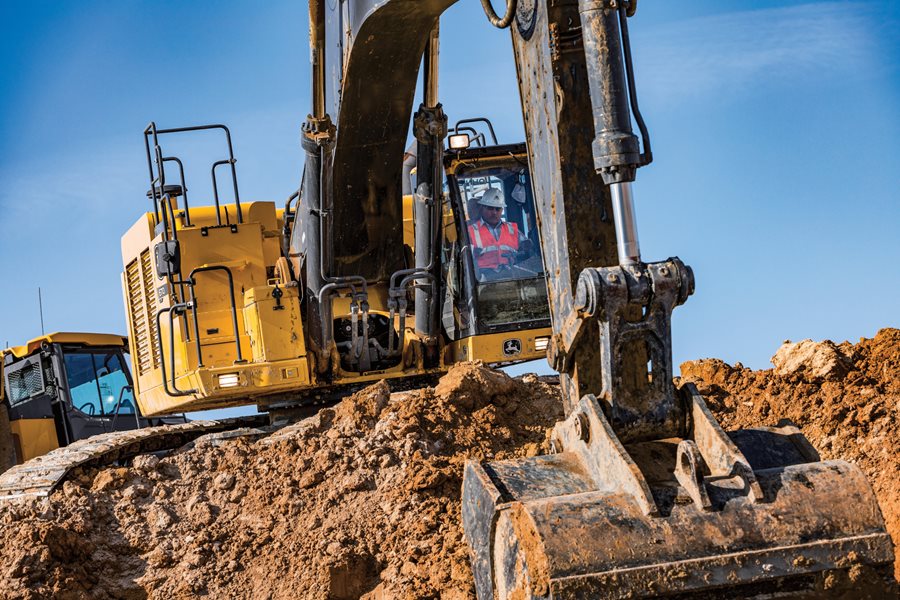
Excavators
Whether you’re loading trucks, digging trenches, demolishing structures, or placing pipe, a P-Tier Excavator can make easy work out of your toughest tasks. Customer-inspired upgrades include improved front-joint durability, a redesigned hood that boosts serviceability and cooler access, and up to seven-percent better fuel economy compared to the 380G LC model. Our machines deliver what you’ve come to expect in mid-size John Deere excavators, so you can count on doing more.
Request a QuoteExplore Mid-Size Excavator Models
Explore Large Excavator Models
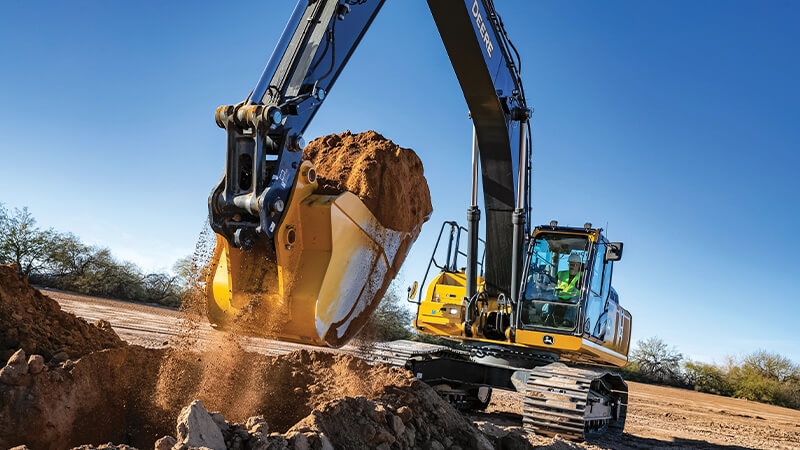
To maximize uptime and lower costs, JDLink™ connectivity provides machine location, utilization data, and alerts to help you maximize productivity and efficiency. JDLink also enables John Deere Connected Support™. Doggett John Deere uses Expert Alerts based on data from thousands of connected machines to proactively address conditions that may otherwise likely lead to downtime. Let us monitor machine health and leverage remote diagnostics and programming capability to further diagnose problems and even update machine software without a time-consuming trip to the jobsite.
Features and Specifications
Excavators are versatile machines with various features and specifications to help you do the job effectively. When purchasing an excavator, consider these features and specifications to ensure that you select the suitable machine for your needs.

Weight And
horsepower
The weight and horsepower of an excavator are critical specifications to consider, as they determine the machine’s overall power and capabilities. A heavier engine with a higher horsepower is ideal for large construction projects, while a lighter machine is suitable for smaller jobs.

Hydraulic flow/
pressure
Excavators use hydraulic systems to power their movements and attachments, making hydraulic flow and pressure crucial specifications to consider. A higher flow and pressure mean the machine can move more quickly and power attachments more efficiently.

Strength and
reach
The strength and reach of an excavator refer to its lifting capacity and how far it can go. These specifications are essential to lifting and moving heavy materials or reaching deep into a trench.

Tracks or
tires
Excavators come with either tracks or tires, and the choice depends on the terrain and environment in which the machine will operate. Tracks offer better traction and stability on rough or muddy terrain, while tires are suitable for paved surfaces.

Remote
Monitoring
Some excavators come equipped with remote monitoring systems that allow you to remotely monitor the machine’s performance and maintenance needs. This feature can help you identify issues early on and avoid costly repairs.

Angled Backfill
Blades
Angled backfill blades are attachments that help you shape and level the soil, making them ideal for landscaping and construction projects.

Climate
Control
Excavators equipped with climate control systems provide a comfortable working environment for the operator, making it easier to work for long hours in hot or cold weather conditions.

Zero Tail
Swing
Zero tail swing excavators are ideal for working in tight spaces, as they can rotate 360 degrees without the rear of the machine extending beyond the tracks or tires.

Control
Patterns
Excavators come with different control patterns, such as ISO and SAE, which determine the orientation of the machine’s controls. Choosing a control pattern you are comfortable with is vital to operate the machine efficiently.
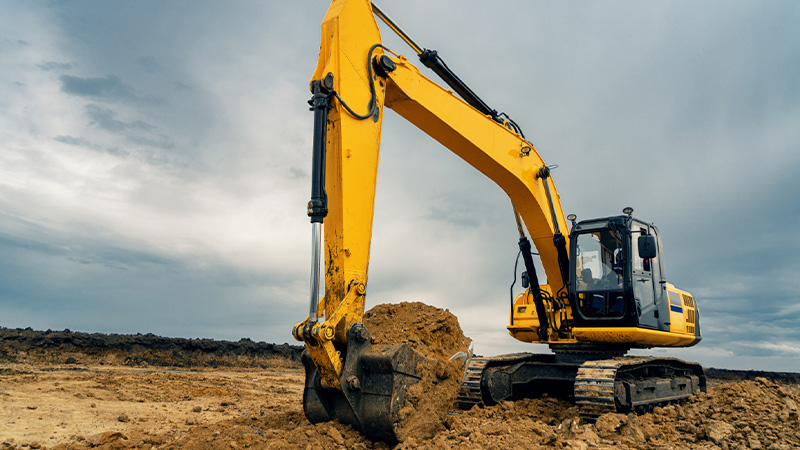
Should I buy a new or used excavator for sale?
Buying a new or used excavator depends on your budget, intended use, and other factors. A new excavator will generally come with the latest features and technologies and be more reliable, but it will also be more expensive. A used excavator may be more affordable but require more maintenance and a shorter lifespan. It’s essential to weigh the pros and cons of each option, assess your needs, and consider the total cost of ownership before deciding whether to buy a new or used excavator.
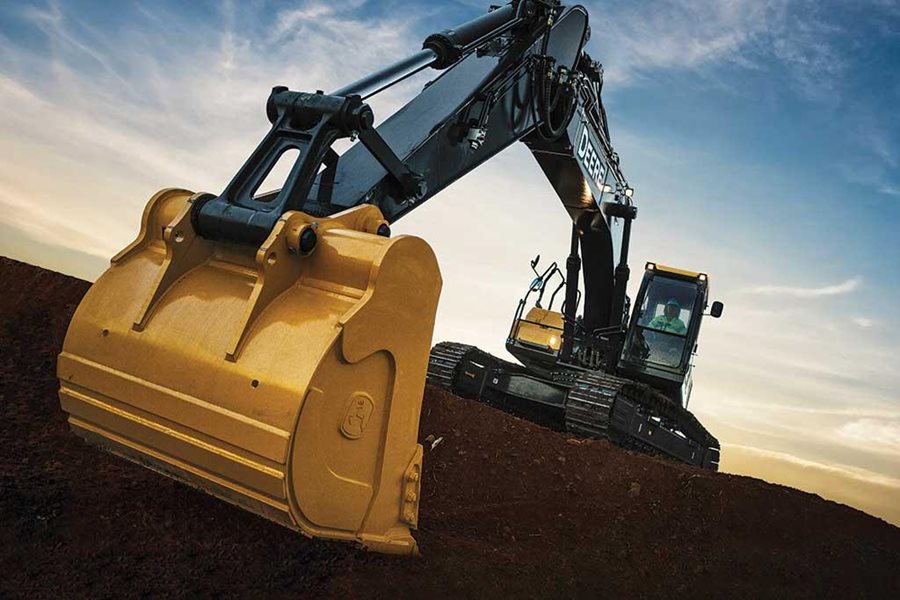
FACTORS TO CONSIDER WHEN BUYING A NEW EXCAVATOR
- EPA Tier 4 Requirements for Excavators
- Excavator Fuel Efficiency
- Operation Experience
- Used Excavators May Still Win Out
FACTORS TO CONSIDER WHEN INSPECTING A USED EXCAVATOR
- History of the Excavator
- Inspect the Exterior
- Check Out the Slew Ring
- Examine the Connection Points
- Check Hydraulics for Major Leaks
- Look the Bucket for Damage
- Excavator Tires
- Swivel Joint
- Manufacturer Customer Support & Parts Availability
- Inspect the Hour Meter
Construction Excavator Equipment Frequently Asked Questions
Where can I order excavators?
You can buy an excavator in one of two ways. You can request a quote directly from any of the product pages for our excavators. You can also find the nearest dealer on our locations page. We provide the names, addresses, and phone numbers of our Texas and Louisiana dealers.
Are product guides available for your excavators?
Yes. We offer downloadable product brochures for all of the John Deere excavators that we sell. Go to the product page of the excavator you’re interested in. Scroll down and look for the “Resources” banner near the bottom of the page. There’s a link to download a PDF for that excavator.
What makes an excavator mid-size vs large?
Excavators are categorized according to their operating weights. Compact models are usually 6,000 kg or 13,227 pounds or less. Mid-size models are usually between 6,000 and 10,000 kilograms or 13,227 and 22,046 pounds. Large excavators are between 10,000 and 90,000 kilograms or 22,046 and 198,416 pounds.
Where can I find the exact dimensions of a particular excavator model?
It’s important to us that you have all the information when looking for an excavator for sale. On each product page, we provide specifications for each excavator. Scroll to the middle of the page to see details concerning the driveline, dimensions, capacities, performance, and operating weight.
What is JDLink?
Our JDLink technology provides you with greater control and management of your construction equipment, including excavators. This technology provides real-time, connected information on equipment status, hours used, geofencing, maintenance, and other data to make sure your equipment is functional.


